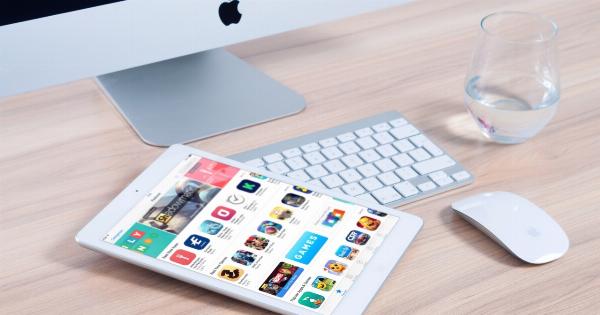Strokes are a leading cause of death and disability worldwide, and early detection is crucial for successful treatment. In recent years, there have been significant advancements in healthcare technology, particularly in the realm of mobile applications.
One groundbreaking app that is revolutionizing stroke diagnosis is the StrokeID app, which utilizes artificial intelligence (AI) and real-time data analysis to quickly identify stroke symptoms.
The need for early stroke detection
Strokes occur when blood flow to the brain is disrupted, either by a clot or a burst blood vessel. This interruption deprives the brain of oxygen and nutrients, leading to brain cell damage and potentially permanent disabilities.
The key to minimizing the long-term effects of a stroke is prompt medical intervention, which can only happen if the symptoms are recognized early.
However, identifying stroke symptoms can be challenging, especially for individuals who are not healthcare professionals. Common signs of a stroke include sudden numbness or weakness in the face, arm, or leg, especially on one side of the body.
Other symptoms may include confusion, trouble speaking or understanding, severe headache, and difficulty seeing in one or both eyes.
Introducing the StrokeID app
The StrokeID app is a game-changer in stroke detection and diagnosis. Developed by a team of medical experts and software engineers, the app uses advanced AI algorithms to analyze patient data and identify potential stroke symptoms in real-time.
By leveraging the power of smartphones and wearable devices, the app can provide a rapid assessment of a person’s condition, allowing for timely medical intervention.
The app works by collecting various biometric data from the user, such as heart rate, blood pressure, and body temperature. Additionally, it utilizes machine learning algorithms to assess facial expressions, speech patterns, and motor functions.
This comprehensive analysis enables the app to detect subtle changes in a person’s physiology that may indicate an oncoming stroke.
Real-time monitoring and alerts
One of the key features of the StrokeID app is its ability to monitor a user’s vital signs continuously.
By leveraging wearable devices, such as smartwatches or fitness trackers, the app can gather real-time data and compare it to the user’s baseline values. If any abnormalities or deviations from the norm are detected, the app sends an immediate alert to both the user and their designated emergency contacts.
These alerts serve as an early warning system, allowing individuals to seek medical attention promptly.
Furthermore, the app provides users with step-by-step instructions on what to do in case of a suspected stroke, including calling emergency services and performing basic first aid while help arrives.
Integration with healthcare providers
The StrokeID app is not only limited to individual use but also offers seamless integration with healthcare providers.
With the user’s consent, the app can securely transmit relevant data to the user’s primary care physician or a designated specialist. This integration ensures that healthcare professionals have access to the latest information about their patients’ condition, enabling accurate and timely diagnoses.
Furthermore, the app can generate detailed reports summarizing the user’s biometric data, symptoms, and any potential warning signs.
These reports can be shared with healthcare providers during follow-up appointments, allowing for a more comprehensive assessment of the person’s overall health and potential risk factors for strokes.
Benefits and impact
The development of the StrokeID app has immense benefits for both individuals and society as a whole. Firstly, it empowers individuals to take control of their health and potentially save lives.
By providing real-time monitoring and alerts, the app significantly increases the chances of timely medical intervention, potentially preventing further damage and long-term disabilities caused by strokes.
Secondly, the app reduces the burden on emergency healthcare services.
By enabling individuals to self-assess and seek medical intervention promptly, the app helps alleviate the strain on emergency rooms and allows healthcare providers to utilize resources more efficiently.
Moreover, the data collected by the StrokeID app can contribute to stroke research and epidemiological studies.
By anonymizing and aggregating the data, researchers can gain valuable insights into stroke patterns, risk factors, and potential preventive measures. This aggregated data can then inform public health policies and initiatives aimed at reducing the incidence and impact of strokes in the population.
The future of stroke diagnosis
The StrokeID app represents a major leap forward in stroke diagnosis and prevention. As technology continues to advance, we can expect further enhancements and refinements to stroke detection apps.
With the integration of more advanced AI algorithms, improved sensors, and wider availability of wearable devices, the accuracy and effectiveness of these apps will only continue to improve.
Furthermore, the StrokeID app serves as an example of the tremendous potential of AI and mobile health applications in improving healthcare outcomes.
It demonstrates how technology can be harnessed to empower individuals, streamline the healthcare system, and contribute to vital research efforts.
Conclusion
The StrokeID app is a groundbreaking tool in stroke detection and diagnosis. By leveraging AI and real-time data analysis, the app provides individuals with the ability to detect potential strokes early and seek prompt medical attention.
With its continuous monitoring capabilities, seamless integration with healthcare providers, and potential for impactful research, the StrokeID app represents a significant step forward in stroke prevention and treatment.































